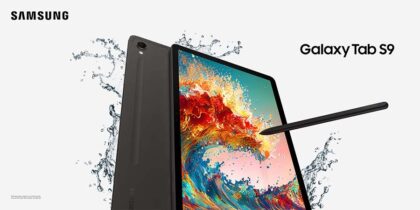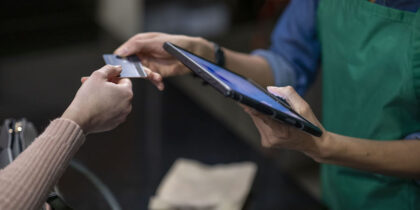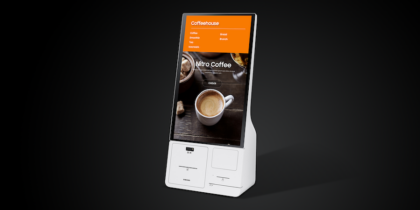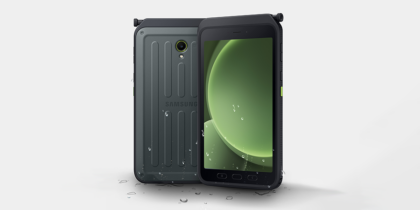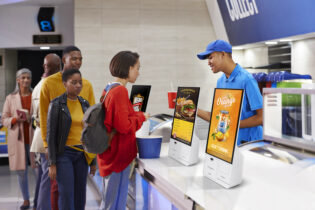Mobile is transforming the store. Eighty-nine percent of retailers plan to provide mobile solutions to associates by 2020, according to BRP. Like Walmart and other early adopters, these retailers are going all-in on the transformative capabilities of mobile devices to empower associates and create great customer experiences. Associate mobile makes consumers 78 percent more likely to buy.
But while their end goals are similar, each retailer must adopt a mobile device acquisition strategy that makes sense for their unique circumstances.
One of the most fundamental decision points is whether to purchase mobile devices for associate use (called a corporate-liable plan, or CL), asking retail associates to use their personal devices (Bring Your Own Device, or BYOD), or following Walmart’s lead with a hybrid CL/BYOD approach. Many see this as a control versus cost savings issue. But there is much more to the CL versus BYOD decision.
To make the right choice, retailers must consider these five questions.
1. What Is Our Scale and Usage?
Mobile devices are being used in clothing, big box and other stores for everything from assistive selling to mobile POS to store workflow processes. Before choosing how to acquire devices, retailers must know how they will be used, now and in the future, including:
- Workload: Retail mobile use cases vary from occasional product info lookup in a small boutique to constant Buy Online, Pickup In-Store (BOPIS) picking and customer assistance tasks across a shift at a big box store. This has significant implications for factors like durability and battery management. In addition to current use cases, consider new applications on the mobile roadmap.
- Fleet size: Leading retailers are adopting a 1:1 strategy, in which every retail associate on a shift has a mobile device. The scale of the fleet is an important factor in considering acquisition strategies. While a CL approach allows associates to share company devices, a BYOD policy requires supporting each worker’s personal device, which can mean managing three to five times more devices overall.
Alongside scale and usage, retailers must determine how mobile devices will be mission-critical to delivering the brand experience: Is this a casual enhancement, or a new way of serving customers? According to Oxford Economics, companies that prioritize the effectiveness of mobile workflows and applications are more likely to provide devices to all employees (65 percent).
2. What User Experience Do We Need?
Applications are a key part of choosing the right device, and therefore the acquisition strategy. A big distinction is whether apps will be exclusively associate-facing or if some screens will be shared with the customer. Is screen size a factor, such as to view product details or planograms or to use configuration tools? Will devices require sleds, payment devices or scanning accessories? How important is a consistent user experience, particularly when a customer will view the screen?
Transform Retail Associate Performance
Get your free guide to empowering retail associates with mobile devices and data. Download Now
These considerations can determine whether a diverse array of employee-owned devices will satisfy application requirements. When a retailer can select the best device for their needs from a variety of options, they ensure the devices are fully capable of the desired user experience.
BYOD devices offer familiarity to the retail associate, potentially aiding training and recruitment. CL devices may require associates to learn a new device, but they are easier to manage, and the lack of familiarity can be mitigated by choosing a user-friendly platform.
3. How Will We Manage and Support Devices?
Whether an individual employee’s device or a one owned by the business, a mobile solution must function effectively. According to Oxford Economics, management and support costs for mobile devices exceed the cost of acquiring devices.
Most retailers run mobile device management (MDM) software to manage their application suites, and if they own devices, the hardware itself. Retailers must ensure:
- Both MDM and business apps run well on all devices. In BYOD devices, this means supporting multiple operating systems and device vintages.
- They have an escalation plan and enough budget and staffing to support devices that are slow/damaged/incompatible/lost, regardless of who owns them.
- An effective onboarding tool and process: BYOD devices must be onboarded one at a time, every time a new associate is hired, while CL enables bulk deployment.
4. How Can We Protect Data and Networks?
Security is critical for mobile devices, particularly those used for payment. Mobile device operating systems are designed to be more secure than desktops, and modern MDM layers on additional security, such as being location- or context-aware. With the advanced security features built into Samsung Knox, for example, mobile solutions are protected down to the hardware.
The more control the retailer has over a device, the greater the ability for the retailer to leverage state-of-the-art security tools. Unfortunately, an employee’s personal device will never be as manageable or secure as a CL device, so retailers must balance any perceived benefits of BYOD with the additional risk.
5. What Are the Cost Differences?
Arming retail associates with mobile devices represents a significant shift in store operations processes. Because of this, retailers will want to create a sustainable, long-term strategy that takes complete lifecycle costs in mind.
Lower acquisition costs are a leading reason companies choose BYOD. However, Oxford Economics research found acquisition costs represent only 10 to 13 percent of the total spend for enabling an employee over two years, depending on company size.
Nearly 90 percent of companies, including Walmart, provide a full or partial stipend to compensate BYOD employees for their mobile phone expenses. The average organization spends about $430 a year per employee on stipends. CIO Magazine found companies with 1,000 mobile devices spend, on average, an extra $170,000 per year when choosing BYOD.
In working out the cost/benefit equation, retailers must also consider the impact of volume discounting for mobile devices, service premiums and the relative cost of help desk support and security protocols for a consistent versus diverse fleet of devices.
Overwhelmingly strong adoption trends make it clear that retailers see associate mobile devices as mission critical. With mobile a key part of the future of retail technology, it’s essential that retailers take a thoughtful, end-to-end approach, with a mobile device acquisition strategy that considers all of the costs, use cases and trade-offs.
Learn how you can improve retail associate performance with data and mobile devices, or tune into this free webinar on creating the universal associate


